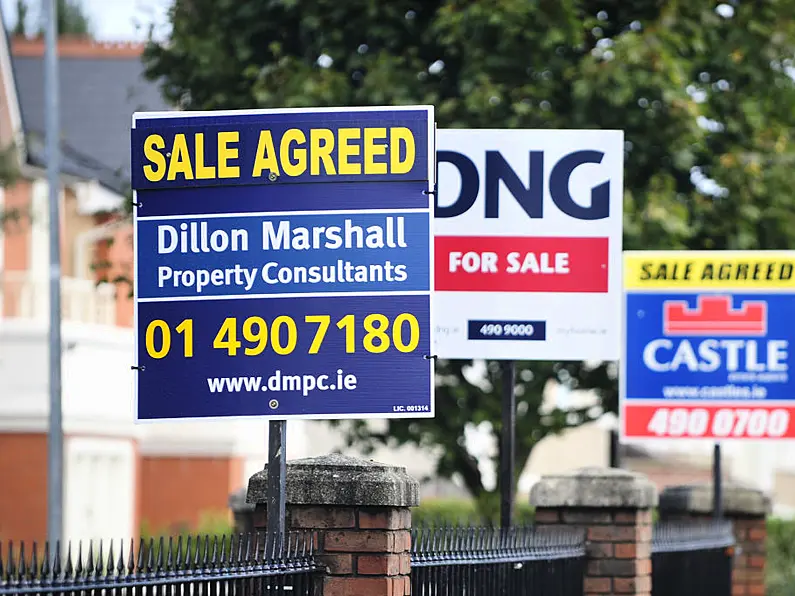Alison Fearon from Switcheroo.ie mortgages discusses latest trends in the mortgage market
Understanding what banks are looking for and what the full mortgage process looks like is critical to avoid pitfalls in your application. We understand what each bank is looking for, how they differ and what will help a first-time buyer succeed in getting the mortgage and ultimately the home they are looking for.
Understand what you can afford
The Central bank has set out guidelines for what mortgage providers can lend to customers. For Fist time buyers this is up to 4 times their household income. So if the household income is €100k then the mortgage amount will be up to €400k. However, each bank has their own affordability models to understand what mortgage amount they are comfortable lending. These affordability models include other lifestyle expenses such as childcare, any other loan repayment and general cost of living expenses. Understanding these items are important as each will have an impact on what you can borrow.
Have a robust saving plan
The typical down payment for a First Time Borrower is around 10%of the property value. There are government supports such as the Help to Buy Scheme and First Time Buyers Scheme which can provide support for deposit, but most lenders look to see at least 5% of the deposit coming from the mortgage applicant.
It is always recommended to also have savings that will cater to additional expenses such as stamp duty, valuation costs, and legal fees. Ensure you have a saving account where you can build your deposit and have a solid plan to show your mortgage repayment ability.
Along with your deposit you will also need to demonstrate that you can cover the monthly mortgage payment. This is referred to as your Proven Repayment Ability. This is typically demonstrated by either rent or saving or a combination of both. It is important that you have at least six months of accounts that can show this repayment ability.
Ensure your financial footprint is streamlined
When a lender determines your financial credibility, they will check your income, outstanding debts, credit history, Proven Repayment Ability and down payment. Most lenders will do a forensic review of your last 6 months’ statements of all your accounts including credit card, Revolut, savings and bank accounts. If you are planning to get a mortgage for your home, you should ensure that you pay your debts in time and avoid taking new loans. Ideally you should consolidate accounts as much as possible so you can present a clear and transparent financial profile for your application. For example having spare credit cards does not help as lenders will assume you use them even if you don’t and there is no balance on them. Having just a current account and a separate savings account is ideal for a bank.
Choose the right mortgage products and lenders
Choosing the right mortgage products and lenders is one of the significant decisions your need to make. The lender and mortgage product will determine the interest rates and payments that you will repay for your mortgage. There are a variety of loan options that different institutions offer. Some loans have lower rates, while others have cashback. Some banks might be able to offer a higher loan than others. Other features to consider are term, fixed period, consolidation, green mortgage discounts and prepayment options. Banks also tend to incorporate internal affordability calculators that help determine the amount of loan you are eligible for.
Given this breath of options it is important to engage with a mortgage advisor. At Switcheroo.ie we understand the pros and cons of each lender and will provide a comprehensive cashflow comparison that will help you make a more informed decision. We will work with you to package your application that presents you case in as good a light as possible.
Approval in Principle
The next step is to receive an Approval in Principle (AIP). An AIP means that the lender has agreed to offer you a loan for the purchase of your home but is subject to certain conditions including the valuation of your new home. While an AIP is not legally binding it is an excellent indication of what the lender is willing to offer you.
Many estate agents require that you have an AIP before viewing a home. Thus, it is recommended that you get an AIP so you can view properties as well as know the houses you can afford to purchase.
Choose a home that is right for you
After receiving your AIP it is time to find the home you want. While this is a very nervous and exciting time it is important to consider your lifestyle needs. When deciding and selecting a home that is right for you and your family, you need to consider multiple factors to ensure the house you choose meets your needs and budget. Are you looking for a new build, or would you prefer to purchase a second-hand house that needs some work? You also need to consider the local amenities you want for your new home, the location and any commute it will require. It would be best if you also thought about your future needs, such as an addition to your family.
When you have found your home, you will need to put down a deposit. At this stage the deposit is refundable as you have not yet exchanged contracts with the vendor.
Loan offers
Your bank will need to be notified that you have a property so they can progress your mortgage. For this they will then require a valuation of the property. The valuer must be from an approved list of valuers. If he house is over 100 years old or if the valuer identifies any structural issue you will also need to get a survey
After the bank is satisfied with the valuation , they will issue you a loan offer which formally confirms that your mortgage application has been evaluated and approved. This is legally binding and so you are on the final stretch of the process to getting the keys to your dream home. Now you will engage your solicitor and exchange contracts with the vendor. When you have done this you and the vendor are both committed to the transaction.
Drawdown and moving into your dream home
The final stage when obtaining your mortgage and dream home is the solicitor confirming that the property you want to purchase stacks up from the recommended legal perspective. You are also required to get mortgage protection insurance. The insurance is designed to provide security to the mortgage in the event you die or suffer a disability. The life assurance company will pay off the loan in case of such events. Additionally, you will need e home insurance that covers the rebuilding cost of your home. After completing the process and securing your dream home, it is time for the thrilling adventure of moving into your new home. The move-in day is when you have finally graduated from just a homebuyer to the official homeowner.
Switcheroo.ie is dedicated to offering well-informed data-driven advice and guidance in each step of home buying in Ireland. If you are considering this or any other mortgage product, be sure to get professional advice and register at Switcheroo.ie
Panda capital Limited T/A Switcheroo is regulated by the Central Bank of Ireland







